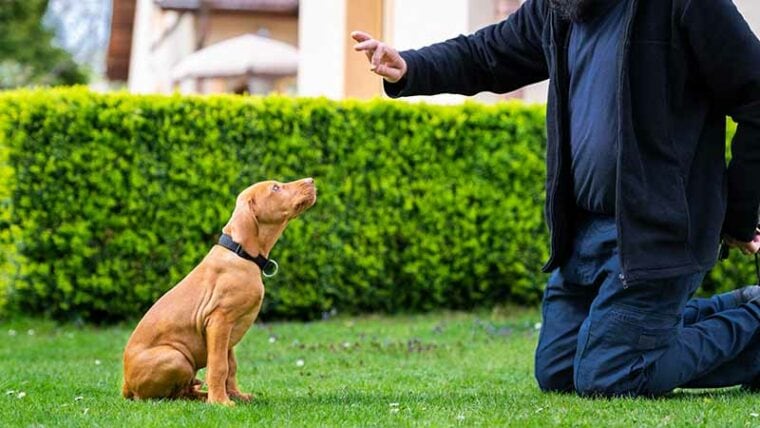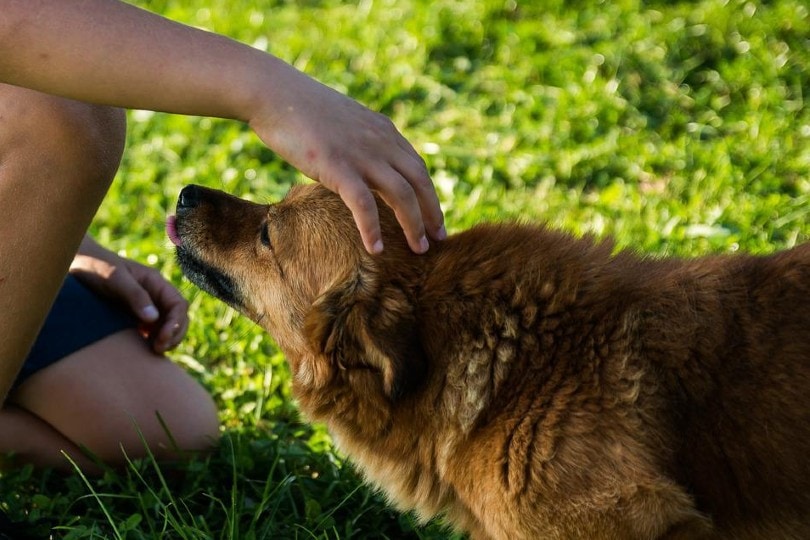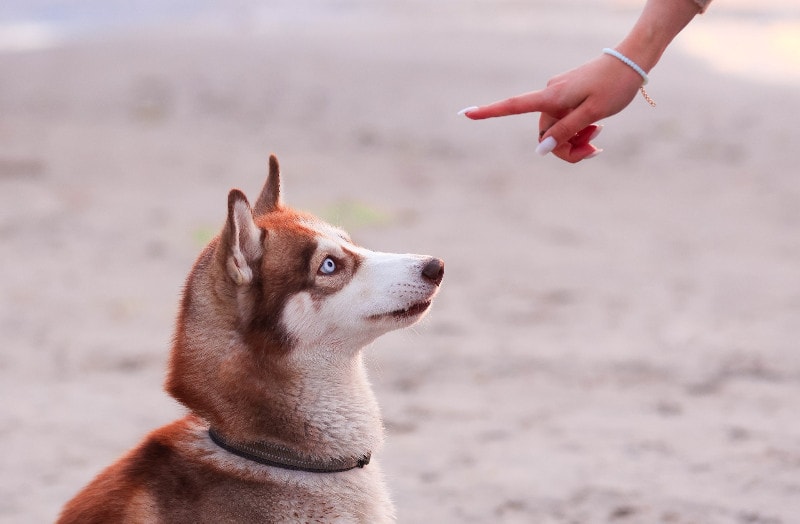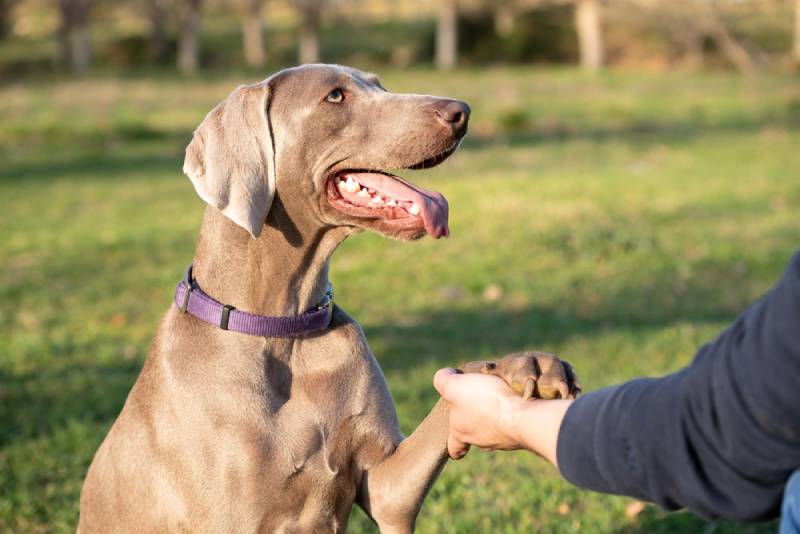
Training a dog takes a lot of dedication and work, especially if there are additional challenges to overcome. You may think that deafness would be a significant obstacle in the training process, but training a deaf dog isn’t as complicated as you think. The main difference between training a deaf dog and a dog that can hear is how to approach each training lesson. To learn more about how you can train your deaf dog, take a look at the eight essential tips listed below.
Before You Start
While the ideas and principles behind training a deaf dog are the same as those behind training a dog that can hear, you must adapt your communication style to teach your deaf dog effectively. Before you start, you should decide how you will get your dog’s attention and which hand signals you will use during training. Likewise, you will need to gather the necessary items to make training a successful venture.

Decide How to Get Your Dog’s Attention
You cannot call your deaf dog’s name and expect to get his attention. Therefore, you must devise another plan to alert your dog that you need him.
Whatever you end up choosing, be sure that you remain consistent. If you start getting his attention with a gentle touch and suddenly shift over to light signals, your dog will struggle to associate the stimulus with the expectation to come to you. This consistency is vital in all areas of training.
Decide on a Hand Signal
Since verbal commands will not work with your deaf dog, hand signals can do the trick. The hand signals are entirely up to you to decide, but you must remain consistent. Once you begin using a hand signal for a specific command, don’t change it. If you are looking for ideas on which hand signals you can use, many dog trainers report using American Sign Language (ASL) to brainstorm their hand signals. Using ASL can make remembering which hand signal you are connecting with each task easier.

Items Needed
As with any dog, using treats is helpful with training. Rewards are essential to training your dog and provide an excellent source of positive reinforcement. You may also want a light depending on how you get your dog’s attention.
The 10 Tips for Training a Deaf Dog
Patience, dedication, and positive reinforcement are critical when training any dog. However, when it comes to training deaf dogs, there are a few tips that you will find useful.
1. Teach Your Dog that Touch Isn’t Scary
One of the first things to teach your dog is that touch isn’t something to be afraid of. Since your dog is hearing-impaired, he cannot tell when you are approaching if he is turned away. If you accidentally startle him, he may lash out due to fear. Not only will this bring the training process to a halt, but it may terrify your dog.
To teach your dog that touch is a good thing, pick a place on his body that you will touch when you want his attention. The shoulder is a good spot. When you touch this spot, immediately present a treat. Repeat this process until your dog gives you his attention the moment you tap his shoulder.

2. Teach Your Dog How to Focus
Once you can reliably approach your dog and get his attention without frightening him, you can teach him how to focus. Interestingly, your dog’s deafness can be an advantage when focusing, as he will not be as easily distracted by irrelevant auditory stimuli. At the same time, you cannot retain his focus with a verbal command, so you need to resort to hand signals. However, if your dog doesn’t know to pay attention to hand signals, he will not realize that you are giving him a command.
To teach your dog to focus on you, give him a treat every time he voluntarily looks at you. During this time, you may also find it valuable to teach your dog a hand signal or other motion that indicates that he should focus on you. It is common for people to train their dog to look at them for instructions by holding a treat on their forehead just above their eyes. When the dog looks up at the treat, reward quickly from the other hand. Once you have firmly established this lesson, training your dog to learn different tasks will be much easier.
3. Break Down the Desired Behavior into Manageable Steps
Once you choose a desired behavior you want to instill in your dog, such as laying down on command, you can break down the behavior into more manageable steps. For instance, you can first teach your dog to come to you on command. Then, you can teach him to stand still. Once those two lessons are learned, you can teach him to sit and lie down.
This step-by-step approach is known as shaping, and it is an excellent technique for dog training. When trying to teach your dog a new behavior, breaking it down into more manageable pieces can be less stressful for your dog.
4. Use Your Chosen Hand Signal as a Modified Form of Clicker Training
Once you have chosen a hand signal for your desired task, you can apply it in a modified form of clicker training. Although your dog cannot hear a clicker to participate in clicker training, the idea remains the same; your dog attaches the stimulus to the reward, and he completes the desired behavior.
When using hand signals, ensure your dog can see the signal clearly. Once he completes the desired task, promptly reward him.

5. Use Different Hand Signals for Different Tasks
When training a dog that can hear, you would provide verbal commands for different tasks, such as “sit” or “come here.” The same idea should be applied to the hand signals that you use for your deaf dog. It doesn’t matter which signal you use for each command as long as it is visibly different from other commands.
6. Train Your Dog to Check In
Checking in is a good behavior to instill in hearing and deaf dogs alike. This teaches your dog to turn to you and ask for guidance when confused. Training your dog to check in looks similar to training him to focus on you. When he looks at you for a command, give him a treat. Eventually, he will begin to look at you regularly.
7. Teach Your Dog How to Settle
All dogs should be taught how to settle down, but it is essential for deaf dogs to learn this technique. Deaf dogs may have a harder time realizing that they are overwhelming another dog or person, so they may unintentionally push boundaries. However, if you train your dog to settle down on command, you can get him under control when he doesn’t realize he is being bothersome.

8. Short and Sweet
Keep training sessions short and engaging. This will enable your pup to concentrate better and learn the desired skills. To keep them focused on you may need initially to use a long line leash to prevent your dog wandering off and getting into trouble whilst training. Learning about boundary mat training will also be a useful tool. Once you know that your dog can stay for extended periods on a boundary mat you can use this in the vet’s office and at the coffee shop for example.
9. Target
Using a targeting stick will help direct your dog to where you would like them to focus or perform a task. Training your dog to target has many and varied uses in training. Pick up a telescopic target stick from your preferred dog accessory provider.
10. Know When to Ask for Help
Training a dog is hard work. If this is the first time you’ve trained a deaf dog, learning a new form of communication can be challenging. If you are uncertain or feeling overwhelmed by the prospect, don’t be afraid to seek the advice of a knowledgeable trainer who has experience with deaf dogs.

Final Thoughts
Some people mistakenly believe that training a deaf dog is impossible. Not only is it possible, but it can also be just as easy as training a dog that can hear. However, like training any dog, it requires patience and perseverance. Don’t be afraid to ask for help if needed; learning a new form of communication can be challenging, and a professional trainer can provide valuable advice for training your dog.
Featured Image Credit: ABO PHOTOGRAPHY, Shutterstock








